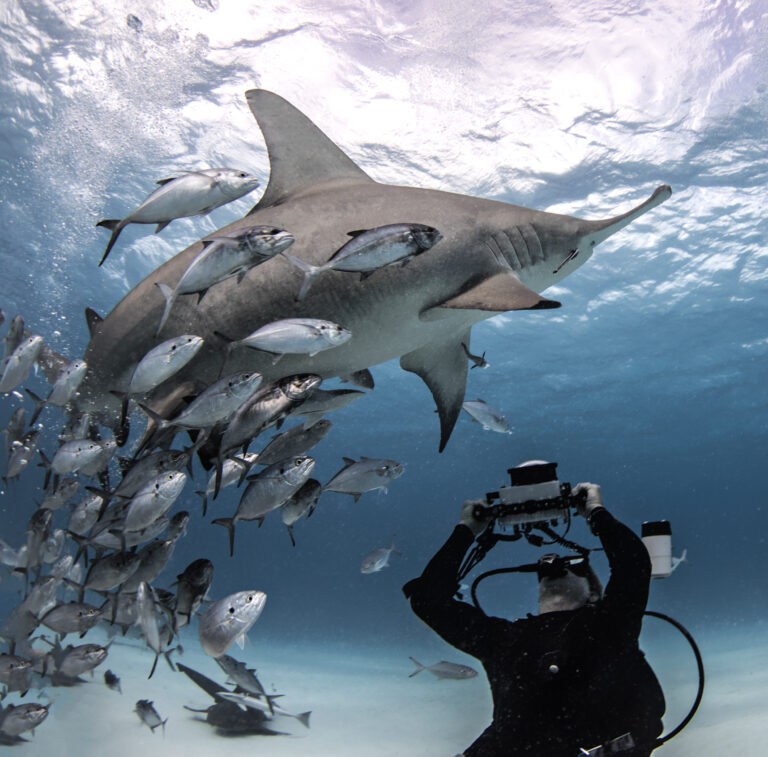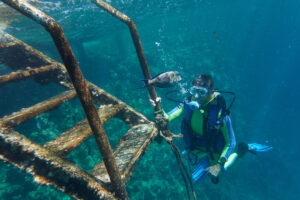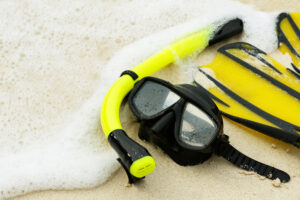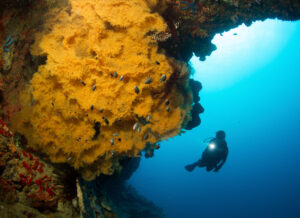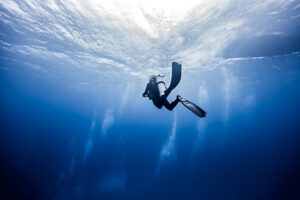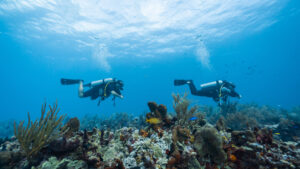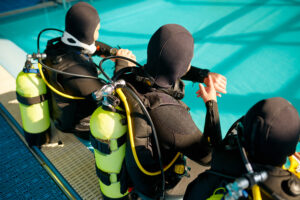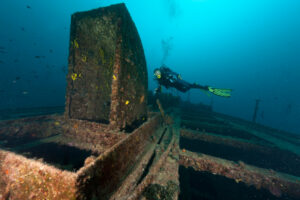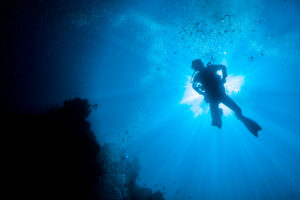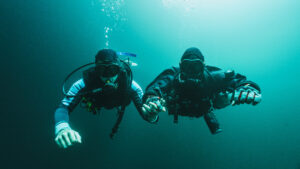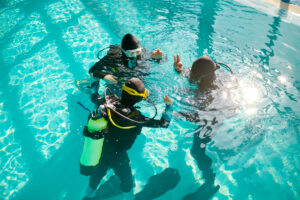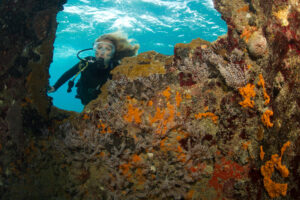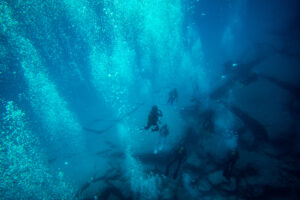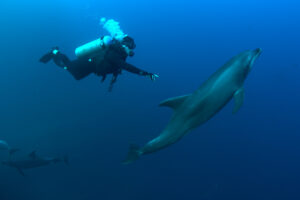What is No Fly / No Fly Time?
No Fly Time, also referred to as No Fly Zone or No Fly Period, is the recommended interval between the completion of a dive and boarding an airplane. It is an essential precautionary measure that helps prevent Decompression Sickness (DCS) and other altitude-related issues that may arise from flying too soon after scuba diving. The importance of observing No Fly Time stems from the physiological effects of pressure changes on the body, both during diving and air travel. Failure to allow sufficient time for these changes to normalize can lead to serious health complications.
The science behind No Fly Time is grounded in the principles of decompression. When a person dives, the increased pressure causes inert gases, such as nitrogen, to dissolve in the body’s tissues. During ascent, as pressure decreases, the dissolved gases begin to exit the body. Flying too soon after a dive can result in gas bubbles forming within the tissues, leading to potentially severe consequences. Understanding No Fly Time is a vital part of safe diving practices.
Background
Scuba diving and flying involve significant shifts in atmospheric pressure, which have profound effects on the human body. When diving, especially at greater depths, the pressure exerted on the body increases, causing inert gases like nitrogen to dissolve into tissues and blood. The deeper a diver goes, the more gas is absorbed by the body. As the diver ascends, pressure decreases, allowing the body to naturally expel the dissolved gases. However, if the ascent is too rapid or a diver boards a plane shortly after diving, this off-gassing process may be incomplete. This increases the risk of developing Decompression Sickness (DCS).
DCS occurs because nitrogen, which dissolves in the body under pressure, forms bubbles in the tissues and bloodstream if it is not properly expelled. While the body can safely eliminate nitrogen during normal, gradual ascents from a dive, flying—where cabin pressures are lower than at sea level—can exacerbate the risk by creating additional pressure changes. It’s a delicate process that requires time for the body to adjust. In essence, the No Fly Time allows for a buffer period, during which nitrogen is safely eliminated before subjecting the body to the lower pressures associated with air travel.
The importance of adhering to No Fly Time cannot be understated, especially for divers who have completed multiple dives over several days or who have engaged in deep or decompression diving. Ignoring this guideline can lead to severe medical conditions, including DCS, which can be debilitating or even fatal in extreme cases. Understanding how the body processes these pressure changes helps underscore the necessity of allowing adequate time between diving and flying.
Decompression Sickness (DCS)
Decompression Sickness (DCS), also known as the bends, caisson disease, or divers’ disease, is a potentially life-threatening condition that occurs when nitrogen gas bubbles form in the body due to rapid pressure changes. The symptoms of DCS can vary from mild to severe, depending on the extent of nitrogen bubble formation and the individual’s physiological response. Mild cases might involve joint pain, itching, or skin rashes, but more severe cases can result in paralysis, cardiovascular problems, or even death.
The severity of DCS symptoms often correlates with the depth and duration of the dive. For example, deeper dives or prolonged exposure to high-pressure environments increase the amount of nitrogen absorbed by the body, thereby increasing the risk of DCS. Similarly, rapid ascents—whether from a dive or due to altitude changes, such as flying too soon after diving—prevent the body from gradually off-gassing the dissolved nitrogen, leading to the formation of bubbles.
When nitrogen bubbles form in the body, they can disrupt blood flow and damage tissues. In joints and muscles, this can cause pain and stiffness, a classic symptom of DCS known as the bends. Bubbles in the lungs can lead to breathing difficulties, and if bubbles enter the nervous system, they can cause neurological symptoms such as dizziness, confusion, or paralysis. In extreme cases, DCS can cause cardiovascular collapse or embolism, leading to death. The seriousness of DCS underscores why divers are advised to respect No Fly Time guidelines, as they help mitigate the risks associated with pressure changes.
Role of No Fly Time in DCS Prevention
No Fly Time serves as a critical safety buffer to reduce the risk of DCS by giving the body ample time to expel nitrogen before it encounters the reduced air pressure in an airplane cabin. When divers ascend too quickly or board a flight before sufficient off-gassing has occurred, nitrogen bubbles may form in the tissues, increasing the risk of DCS. By adhering to recommended No Fly Time intervals, divers significantly reduce the chance of gas bubbles forming.
No Fly Time recommendations are typically based on guidelines established by authoritative diving organizations. The main purpose of these guidelines is to give the body enough time to safely eliminate excess nitrogen, reducing the likelihood of decompression sickness. For recreational divers who stay within no-decompression limits, the waiting period may be shorter than for those who engage in multiple dives over several days or participate in deep, technical, or decompression diving.
In addition to No Fly Time, other factors play a role in preventing DCS. These include proper dive planning, controlled ascent rates, and the use of dive computers or tables to monitor nitrogen absorption and off-gassing. By incorporating No Fly Time as part of a broader approach to safe diving, divers can enjoy underwater exploration while minimizing the risks of post-dive complications.
No Fly Time Guidelines
The recommended No Fly Time varies depending on the depth, duration, and frequency of dives, as well as whether the dive required decompression stops. Guidelines established by the Divers Alert Network (DAN) and other diving organizations, such as PADI and NAUI, provide practical recommendations for divers to follow.
For single no-decompression dives, a minimum No Fly Time of 12 hours is typically recommended. This allows the body to off-gas the dissolved nitrogen safely, reducing the risk of bubble formation during a subsequent flight. However, for multiple dives over several days or multiple no-decompression dives in a single day, a longer interval of 18 hours is advised. This extended waiting period accounts for the greater nitrogen load accumulated during repeated dives, giving the body more time to off-gas.
In the case of decompression dives, where divers exceed no-decompression limits and require staged stops during ascent to allow nitrogen off-gassing, a longer No Fly Time is necessary. While a minimum of 18 hours is suggested, some experts recommend waiting between 24 and 48 hours before flying. This precautionary measure helps ensure that even the higher levels of nitrogen absorbed during decompression dives are adequately eliminated.
It’s essential to recognize that these guidelines are general recommendations and may not apply equally to all individuals. Factors such as a person’s age, health status, fitness level, and dive profile can affect how long it takes for the body to off-gas nitrogen. Therefore, divers are encouraged to consult with their dive computers, dive tables, or instructors to determine the optimal No Fly Time for their specific situation.
Altitude Considerations
No Fly Time guidelines are not limited to air travel. Divers must also be mindful of altitude changes that occur when driving or hiking to higher elevations after diving. The risk of DCS increases when a diver ascends to altitudes of 300 meters (1,000 feet) or higher within 12 to 24 hours after a dive, as the reduced atmospheric pressure at higher elevations can cause nitrogen bubbles to form in the body, just as in an airplane cabin.
When planning a trip that involves driving through mountainous terrain or hiking to higher altitudes after diving, divers should follow the same No Fly Time guidelines as they would for air travel. This precaution ensures that the body has sufficient time to off-gas nitrogen and prevents altitude-related complications. Some divers might underestimate the effects of altitude changes compared to flying, but the risk remains significant, particularly after deep or multiple dives.
Additionally, altitude exposure can amplify the effects of other risk factors for DCS, such as dehydration, fatigue, or rapid ascents from dives. By respecting the No Fly Time and remaining mindful of altitude changes after diving, divers can safeguard their health and minimize the risk of DCS.
Safety Precautions and Responsible Diving
Adhering to No Fly Time guidelines is an essential component of responsible diving, but it is only one part of the broader safety measures that divers must follow. Proper dive planning, controlled ascents, hydration, and avoiding substances like alcohol and drugs before diving are critical to minimizing the risk of DCS and other diving-related complications.
Planning dives with the help of dive computers or tables ensures that divers stay within no-decompression limits and make gradual ascents. A slow, controlled ascent rate allows the body to off-gas nitrogen efficiently, reducing the risk of bubble formation. Safety stops—brief pauses during the ascent, typically at 3 to 5 meters (10 to 15 feet)—are another important measure, particularly after deep dives or multiple dives in a day.
Hydration plays a key role in nitrogen elimination. By maintaining proper fluid intake, divers support the body’s natural processes of off-gassing and reduce the risk of DCS. Alcohol and drugs, on the other hand, should be avoided before and after diving, as they can impair judgment, increase dehydration, and interfere with nitrogen elimination.
Understanding personal limits is equally important. Divers should be aware of their physical condition, experience level, and the specific challenges of each dive environment. Diving within one’s limits and avoiding overly challenging conditions helps prevent unnecessary strain on the body, which can increase susceptibility to DCS. Diving with a buddy system adds an extra layer of safety, as divers can look out for each other and ensure adherence to dive plans.
Regular health check-ups, particularly for those with pre-existing conditions, are also advised. Conditions such as obesity, cardiovascular disease, or lung issues can increase the risk of DCS. By staying aware of personal health and observing responsible diving practices, divers can greatly reduce the risk of complications.
Key Takeaways
No Fly Time is an important safety guideline for divers to follow, helping to minimize the risk of Decompression Sickness and other altitude-related issues. By respecting No Fly Time recommendations and practicing responsible diving habits, divers can enjoy their underwater experiences while safeguarding their health. Always consult dive computers, tables, or instructors to determine optimal No Fly Time, and follow best practices to ensure safe diving.

